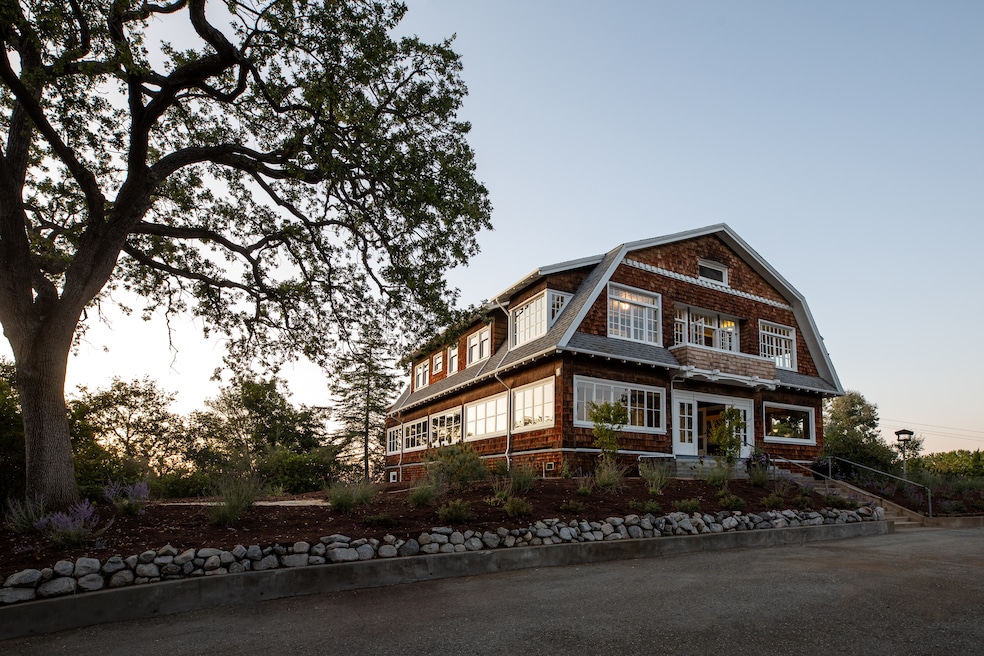An early 20th-century residence atop a hill south of San Francisco became the longtime home of physicist Wolfgang Panofsky, who helped build one of the world’s longest buildings a short distance away at Stanford University.
Panofsky worked on the 2-mile-long Stanford Linear Accelerator, which is used to smash atoms with the goal of better understanding how the universe works. Beyond this project, Panofsky was an advisor to U.S. presidents on nuclear disarmament, after working on efforts to build an atomic bomb during World War II. His wife, Adele, an amateur naturalist, achieved her own measure of fame when she assembled a life-sized replica of a fossil of a previously unknown ancient marine animal that was discovered while crews prepared the ground for the accelerator.
After more than 70 years in their six-bedroom house at 25671 Chapin Road in Los Altos Hills, the Panofsky family plans to sell it for $5.5 million. Patrice Horvath of Illuminate Properties, the listing agent, told Homes.com that aside from its illustrious owners, the house’s Dutch Colonial Revival architecture makes it an unusual find in the region.
“The architecture of the home is very unique,” she said. “It does limit the pool of buyers, because not everyone’s looking for a period home. However, a lot that is over 2 acres and a half mile from downtown Los Altos is extremely rare.”

The interior of the house has been carefully preserved, from the original crystal doorknobs and light fixtures to the intricate wood detailing below the kitchen sink. Some of these features were already dated by the time the Panofskys moved there in 1952, but the family made a point to preserve them rather than modernizing, Horvath said.
“One thing I was surprised about was the period details — you notice that it was not cheaply done,” Horvath said. “People pay a lot of money to replicate those crystal knobs.”

Wolfgang regularly hosted fellow Stanford faculty for seminars in the living room, and it was there and in an adjoining office space that he and colleagues developed plans for the accelerator in the early 1960s.
Adele spent a lot of time in a small upstairs room where she maintained her collection of minerals, fossils and animal bones, according to a memoir compiled by the Panofskys’ son Richard. She worked for 30 years to make the fossil replica, he wrote. The replica was later displayed at the accelerator visitor center and will soon be part of a new exhibit at the San Mateo County History Museum.

Adele was also something of an artist, painting a peacock on the side of an original claw-foot tub in one of the bathrooms. Her daughter Margaret painted a water nymph on the side of a giant water tank in the house’s basement; the tank, which is still there, was needed in the 1950s because Los Altos Hills’ water pressure was insufficient.
Another distinctive feature of the house is the wraparound porch, which runs along the front and all the way down one side. Horvath said Fred Munger, a retired ship captain, built the home as a summer retreat, as did many affluent people based in San Francisco at the time.
“The people that built these homes were all from San Francisco,” she said. “They would come here because the climate was very Mediterranean-like.”
A likely buyer for this home will be someone who works in Silicon Valley’s technology fields or venture capital, she said.
